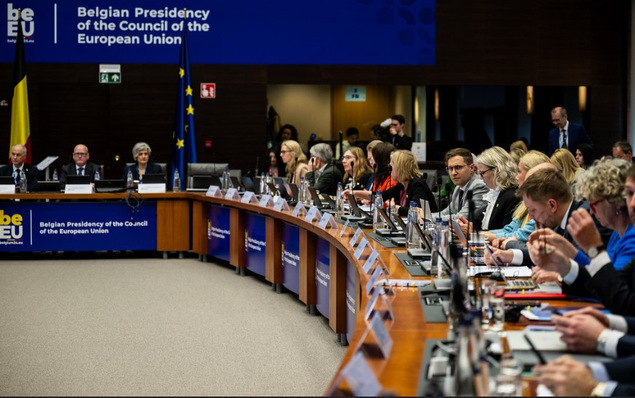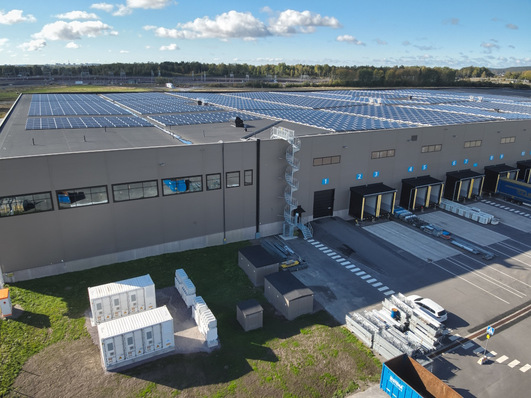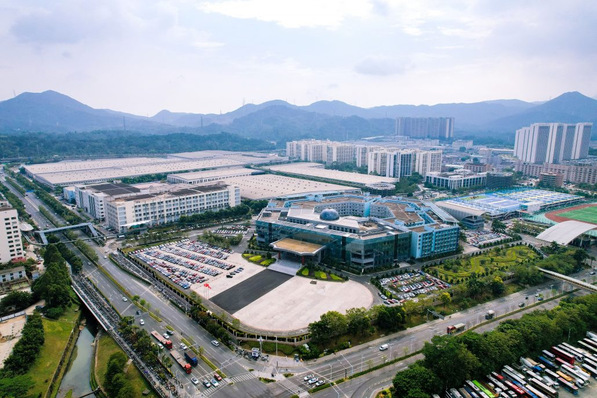In recent years, with new suppliers entering inverter business, the competitive pressure seems to be mounting. What impact does this competition have on SMA?
Juergen Reinert: The fight over prices has flared up badly. There are a number of inexpensive inverters coming over from Asia, but they do not always have the functionalities that the norms require. We, on the other hand, are pursuing a clear strategy of focussing on the system as a whole, in order to give the customers a solution that matches the requirements. We are transforming from a supplier of inverters into one of entire systems.
In what market segments is the fight over prices most noticeable?
For installations between one and 100 megawatts. Those are not the really large solar parks, but rather the commercial greenfield systems where the central inverters are competitive with string inverters.
And where two types of DC system compete with each other: 1,000 volts versus 1,500 volts from the solar strings...
Because we connect two IGBTs in series, we can actually offer 1,500 volts. This allows us to cover the entire voltage range, and our IGBTs are also much more resistant to cosmic radiation. This means that we can install our central inverters up to much higher elevations, even above 2,000 metres. So our IGBTs have a much longer service life than the components of other suppliers.
What properties do you focus on when enhancing your products?
On the one hand, the inverters need to be of high quality – even though the fight over prices is so fierce. We are not willing to compromise on that. And the systems need to be easily extendable, either in the domestic or the greenfield market. The energy management and the safety functions are integrated, likewise the ability to incorporate storage systems. We do not develop a lot of additional components to fit the inverter, but make these functions an integral part of the systems across the output levels, which clearly benefits the customers as far as the price is concerned.
You offer string as well as large-scale central inverters. Will you not have to decide at some point?
We will remain a full-range supplier, so that we can offer our customers the most comprehensive range of solutions possible. They decide what solution they want to use. For example, we offer the string inverter STP 60 in combination with a matching medium-voltage connection for centrally wiring a solar park. But we also offer a medium-voltage solution that covers up to five megawatts using a container station with a central inverter. Such systems can be installed very quickly – and keeping installation costs low is one of the key jobs our our technicians.
SMA has many years of experience in the solar business, and is active in all areas of the world. This could be both a curse and a blessing, as global distribution is very expensive, is it not?
Being active in all areas of the world and all important markets – and not just with sales personnel but also with service staff – is precisely what makes us so strong. Of course, we have to keep adapting to the circumstances of the market, and the same is also true for our products. We want to meet the specific needs of our customers at low cost. That is what our research focusses on.
SMA originated in power electronics, the key component needed for connecting storage batteries. Are you also getting into battery production?
No, we are not seeking to build our own storage cells or battery modules. Developments in this field are so rapid that we, as an independent system supplier have our work cut out trying to keep up. Within a short space of time, capacities of lithium cells have nearly doubled. The dimensions and wiring in storage units have totally changed. We will not get into that business. And anyway, sometimes getting access to the emerging storage markets can be easier by going through locally strong brands.
How do you view the connectors with the batteries?
It is our strategy to integrate the batteries that are available on the market. For that reason, we are in close contact with the leading suppliers, in order to jointly enhance the systems. We are aiming to make the power electronics compatible with the best storage unit in each market and optimise it for self-consumption as well as overall usefulness to the grid.
What differences do you notice in the different markets for storage?
Houses of comparable size in the US, Japan and Germany tend to be equipped with differently sized storage units, because the size of a stationary storage battery is also influenced by the amount of electricity a building consumes. Thus Americans tend to install larger units, whereas in Germany these are still much smaller. However, there is also a trend towards larger batteries. This is mostly a result of the fall in price for lithium batteries.
What new products are you working on?
This autumn in Las Vegas we will be presenting a new string inverter with 50 kilowatts of AC output. It is designed for commercial rooftop installations and will integrate many features that have so far had to be connected separately. In the third quarter, we will bring out the new three to five kilowatt Sunny Boy for private customers. It will integrate the monitoring of the installation: The operator or the installing company will be notified by text message or e-mail, whenever the installation has a malfunction or needs to be exchanged. Within three days, the operator will be provided with a substitute unit without having to do anything. That is part of our warranty, and the costs will be covered by us. What that means is that the substitute unit will already have been delivered to the customer and the installing company only needs to mount and connect it. Should the substitute unit not be there within three days, we also take over the losses due to the lack of yield. We call this Smart Connected. All necessary communication systems such as WiFi or Ethernet are also built in.
When will this service also be available for larger units?
For the time being, we will roll it out in the domestic segment, but later also for commercial systems. Communication technology has advanced to such a degree today that we can implement such services very easily as far as the technical side is concerned.
While these smart inverters are connected to the grid, they process a lot of data. What do you do with that?
We use it to provide precise data on generation and consumption in order to ideally integrate the PV electricity into the grid. As a result, grid utilities and other actors in the energy industry can, for instance, massively save costs as well as better market their electricity. Of course, when making the data available, we go to great lengths to protect our customers. It is impossible to trace individual installations. We started a test run together with the German grid utility Tennet in June, and from August, regular operations will commence. One other important step is our cooperation with Tigo Energy, allowing us to advance the monitoring to the level of the solar panels and thus to optimise self-consumption and the overall usefulness to the power grid.
So there will be more electronics in the panels?
Yes. We are cooperating perfectly with Tigo, in order to include the necessary electronics into the connectors of the solar panels. The MPP tracking will remain within the inverter. What little electronics are needed will be integrated into the connector’s cover. The components have few stresses and loss. Depending what the customer wants, it allows us to optimise yield, keep track of the operational parameters specifically for every individual panel or integrate safety technology, for example to be able to switch a panel off in case of an emergency. In contrast to conventional solutions, Tigo’s optimisers do not need to be applied to every panel, but only to panels where that makes sense or is desired. That brings about a significant cost advantage
The interview was conducted by Heiko Schwarzburger.
Did you enjoy reading the interview “SMA are transforming into a full system supplier of power electronics, says CTO Juergen Reinert”? Also, discover, what Dr Matthias Vetter of Fraunhofer ISE or Santiago Senn, director of LG Chem Europe on pv Europe had to say about innovation in storage systems, markets and distribution and which opportunities Andreas Piepenbrink, the CEO at E3/DC sees for the energy storage market.
See all our expert's interviews here at a glance.
Find all new products for solar inverters and power electronics here.







